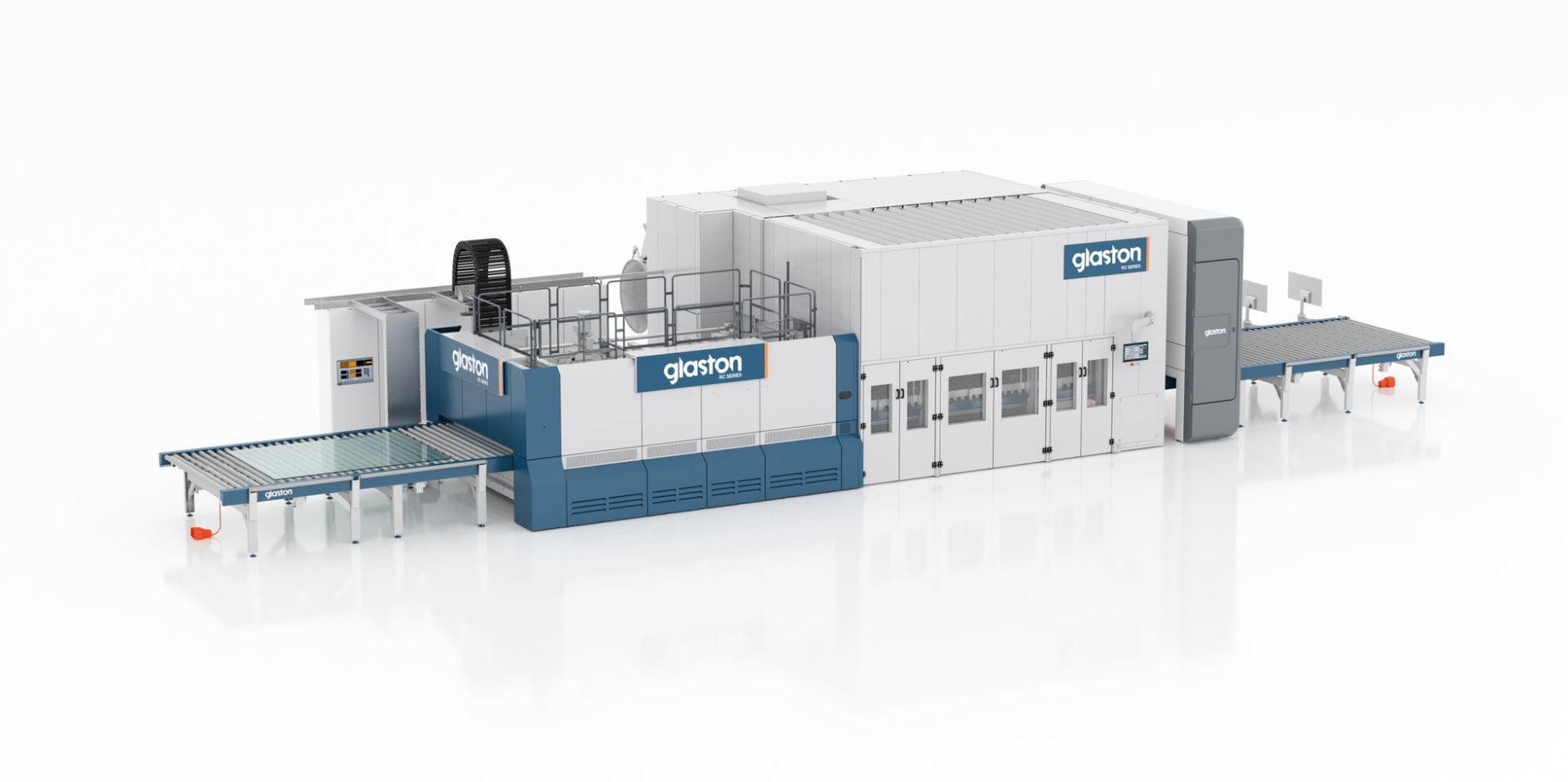Mid-American Glass, US
Reference - Americas
Glaston’s RC Series joins existing FC line - Maggie meets Louie Noodles
“Maggie gives us outstanding flexibility to temper 3 to 19 mm glass. Louie gives us purpose – to temper the best heat-strengthened and heavy commercial insulated glass,” says Michelle Magyar, President of Mid-American Glass.
Not many tempering furnaces are fortunate to be christened with human names. But then, not many have an owner who treats them as family, just as she does her team of talented personnel. Together, they have helped Mid-American Glass (MAG) grow and expand with additional factory space and a brand-new Glaston tempering furnace – the RC Series. Recently, it joined the company’s first Glaston tempering furnace, the third FC line at the time in North America.
Michelle contacted Glaston at the end of August 2020. Jim Hartley came to talk about ways Glaston could help Michelle get more out of Maggie. But Michelle had another idea. “I want to buy the Glaston RC Series furnace,” she insisted. “When can I get the paperwork?”
Once again, Michelle had been doing her homework. She had collected opinions from others in the field and heard lots of positive comments about Glaston’s RC 350 Series.
MAG’s customers were evolving. Michelle needed to go where her customers were taking the business – toward heat-strengthened and heavy commercial insulated glass.
“Louie Noodles, as we call the RC Series line, was my grandmother’s nickname for my father,” Michelle explains. “It fits them both perfectly – a strong workhorse that knows exactly what it needs to do. As my operators say: ‘Louie eats up glass.’” Louie’s 110” x 190” bed provides the company with 60% greater capacity than Maggie.
Michelle turned all RC Series project management over to Weston Grove, who joined MAG about five years ago as Processing and Quality Engineer. Wes supervised the building construction, checked the drawings and oversaw the installation.
Both Michelle and Wes praise Vishal Haswani and Petri Mattila, Glaston’s technicians, for their work. “They were diligent and precise,” Wes says. “It was amazing how they paid attention to details. They wanted everything to be less than 1 mm off – even the squareness of the walls – just to make sure the machine would sit perfectly.” Vishal even made the electricians rewire the furnace, as he said the electrical cables looked like a rat’s nest.
“I didn’t even look at any other suppliers. Ever since we got Maggie, I have been very satisfied with the relationship we have with Glaston and the quality. For me, it’s essential to work with suppliers who stay with you throughout the lifecycle of the equipment – far beyond the point of sale.”
Similar references
FLACHGLAS, Germany
#flat glass laminating #glass processing #glass quality #laminated glass #laminating #ProL #ProL-zone #quality control #reference #safety glass #upgrades
At FLACHGLAS, a culture of operational excellence fuels continuous modernizations. “The latest Glaston ProL upgrade for our 50-year-old lamination line has helped us raise performance, save energy and automate production with the push of a button,” says Martin Geiss, Technical Manager at FLACHGLAS Wernberg.
Read moreFull Glass, Peru
#architectural #automation #flat glass tempering #glass tempering #glass tempering process #iControL #RC Series #reference #tempered glass
“We are very satisfied with the quality of our new RC Series tempering line and the glass it produces. The Vortex Pro convection control system is excellent. The furnace made by Glaston China is just as well manufactured as the previous furnace we bought from Glaston’s factory in Finland,” says Frank Calderón Gómez, Managing Director at Full Glass in Lima, Peru.
Read moreAGC Interpane, Germany
#architectural #automation #glass processing #IG unit #insulating glass #reference #technology
“I walk through our insulating glass production facility every day with pride,” says Daniel Bruckelt, Production Manager Insulating Glass of AGC Interpane in Plattling, Germany. “Not just because everything is so well organized and structured, but also because Glaston has given us a coherent concept for our unique insulating glass (IG) production. And this is what allows us to remain top-of-mind for challenging world-class projects.”
Read moreArticles
GPD 2023 Presentations – Sustainability and trends
The Glass Performance Days 2023 conference brought forward a compelling array of presentations focused on sustainability and emerging trends within the glass industry....
Read moreGPD 2023 Presentations – Glass processing technologies
The Glass Performance Days 2023 conference showcased a range of pioneering presentations on glass processing technologies, bringing together industry leaders and...
Read moreGPD 2023 Presentations – Architectural glass
The Glass Performance Days 2023 conference has once again brought together a wealth of knowledge and innovation from the leading minds in the glass industry. We...
Read more
